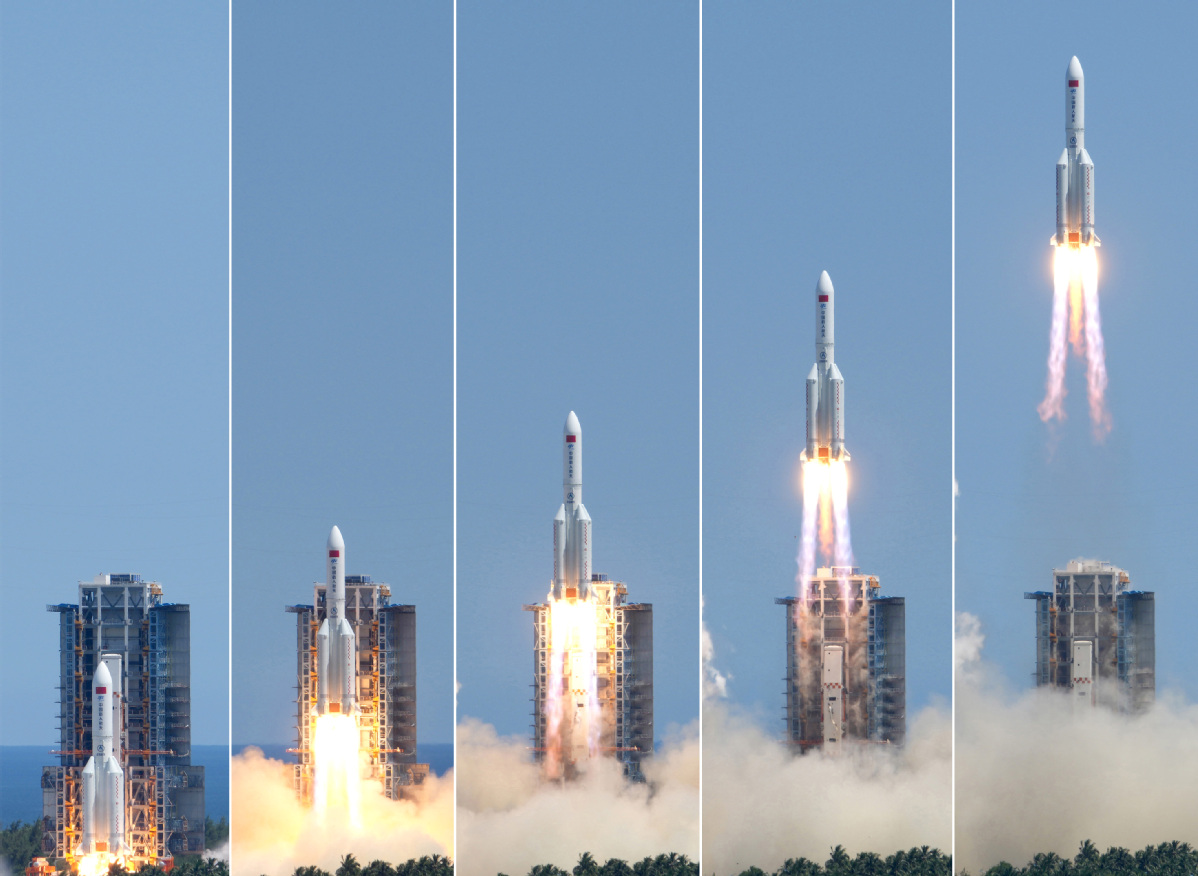Rocket debris fall back to Earth
 0 Comment(s)
0 Comment(s) Print
Print E-mail chinadaily.com.cn, July 31, 2022
E-mail chinadaily.com.cn, July 31, 2022

Debris of the recently launched Long March 5B carrier rocket of China fell back to the Earth and ended up in the Pacific Ocean early Sunday morning, with most of the remnants burnt up during the reentry process, the China Manned Space Agency said.
The debris' atmospheric reentry and crash took place around 12:55 am (Beijing time), the agency said in a brief statement, noting the touchdown site is in waters located at 9.1°N and 119.0°E. It did not provide additional details.
Based on the coordinates given by the agency, the site is in the Sulu Sea, close to Palawan Island.
The final return put an end to Western media's speculations on the possibility of debris crashing over an inhabited area in what they called "an uncontrolled reentry" of the Long March 5B.
Zhao Lijian, a spokesman for the Foreign Ministry, said on Wednesday that China had been closely tracking the movement of the used rocket in orbit and continued to publish its information online.
He noted the Long March 5B rocket model has designs and devices that neutralize their debris and impact on Earth and most of its components would be destroyed during the atmospheric reentry.
Blasted off on July 24 at the Wenchang Space Launch Center in Hainan province, the rocket was used to send China's Wentian space lab module to dock with the country's Tiangong space station.
A Long March 5B is 53.7 meters long, with a core-stage diameter of 5 meters. The rocket is propelled by liquid oxygen, liquid hydrogen and kerosene and has a liftoff weight of about 849 tons.
The rocket model is the most powerful Chinese launch vehicle when it comes to carrying capacity to the low-Earth orbit. It is essential to China's space station program because it is now the only Chinese launch vehicle capable of carrying large space station parts to orbit.






Go to Forum >>0 Comment(s)